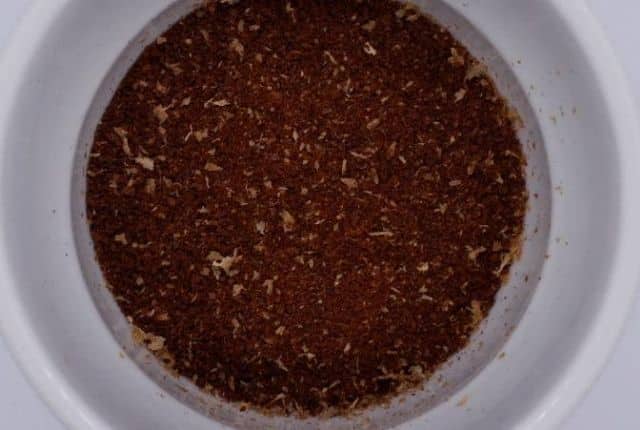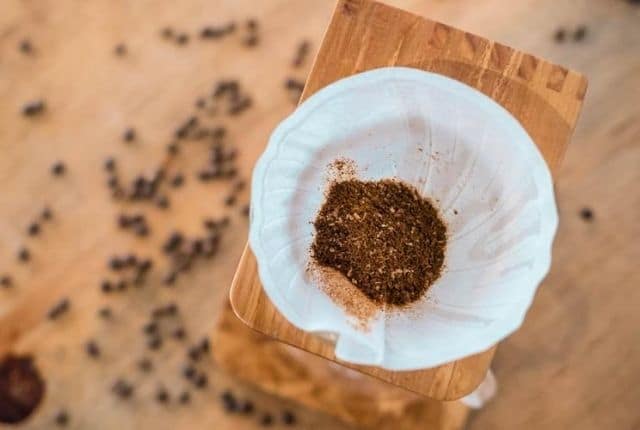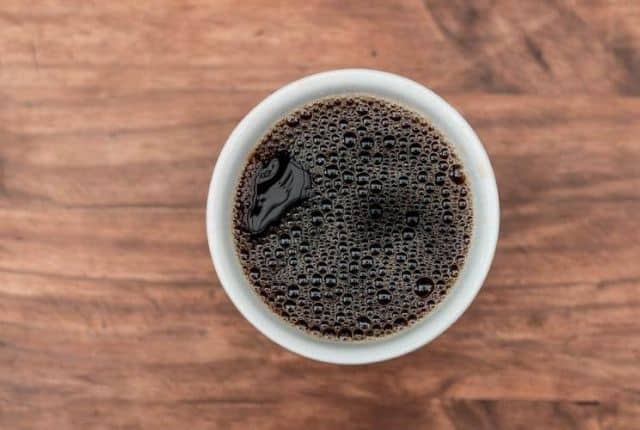
Choosing a coffee can be overwhelming if you’re unfamiliar with the terms used on packaging. A common label you’ll see is the claim that the coffee is “100% arabica”. But what does this mean?
To explain that, you first need to understand the key differences between the two main species of coffee, arabica and robusta. I spoke to experts in the supply chain to figure out the differences between the two, and to learn about what it means when coffee is labelled “100% arabica”. Read on to find out what they said.

WHAT IS ARABICA COFFEE?
Dozens of coffee species exist, of which roughly 124 have been identified. The two that dominate commercial production and sales are Coffea arabica and Coffea canephora (commonly referred to as robusta).
Arabica makes up about 70% of the world’s coffee production, and is generally regarded as producing better tasting coffee. Of course, the exact flavour of a coffee depends massively on its origin, processing, method, and much more.
Gonzalo Hernandez is President of Coffea diversa, a green bean sourcing company based in Costa Rica. He adds that “there’s no general recipe or description in terms of the taste profile of arabica, depending on the variables. The taste profile could be chocolatey, spicy, floral, caramelly, bright acidity, dry acidity, low acidity, juicy, fruity, etc.”
Hanna Neuschwander is Director of Communications and Strategy for World Coffee Research in Oregon, USA. She explains that robusta evolved roughly 100,000 years ago, while arabica is only around 10,000 years old. Therefore, robusta has had more time to develop and evolve, and in that time, it has become much more adaptable. It can grow in more diverse climates and is naturally more resistant to pests and disease. Robusta plants also generally have a higher yield.
The fruit of the robusta plant is also naturally higher in caffeine, lower in sugar, and produces more crema. Furthermore, because it’s cheaper and easier to grow, robusta is often used in lower quality blends or instant coffee. It has therefore developed a reputation for producing unpleasant coffee, with many drinkers describing it as having a harsher flavour.

Hanna says: “Robusta is considered to be much lower in quality than arabica. However, it’s debatable just how much of this quality issue is due to genetics, and how much is due to the fact that robusta is generally not held to the same quality standards as arabica.”
Despite this, Hanna acknowledges that robusta production has risen dramatically over the past 50 years in response to a higher demand for cheaper coffees and challenges facing arabica production.
However, some producers believe that if the same amount of research and resources were invested into robusta production, it could produce single-origin specialty coffees; there is already an emerging specialty robusta scene in Brazil. As well as this, some farmers are also experimenting with arabica-robusta hybrids to improve their crops’ resilience and yield.
There is also a third species that accounts for about 2% of the world’s coffee consumption: Coffea liberica. Liberica is known for producing a smokey and bitter-tasting coffee. It’s cheap to produce and thrives in Asian countries like the Philippines, Malaysia, and Indonesia, where it’s often enjoyed as an affordable, mass-produced brew. Liberica is relatively unknown outside of these areas.

THE “100% ARABICA” LABEL
Coffee labelled as 100% arabica contains no robusta coffee. Hanna says that brands use this label to indicate that their coffee is high quality. She explains: “When arabica dominated world markets, before the middle of the 20th century, there was no need to market arabica in this way. But when robusta began to become more widespread, there was a push to differentiate arabica as being higher quality.”
In the past, some roasters would add robusta to blends to increase their volume, therefore lowering costs and increasing profits. This meant that roasters who weren’t adding robusta to their blends needed to differentiate themselves, and market their coffee as being higher in quality.

However, a 100% arabica label on your coffee should not be interpreted as a sign of quality. Hanna says that the label is a “statement of the fact about the contents of the bag”, and nothing more. It simply means that there is no robusta present.
“There is nothing inherent in the [100% arabica] claim to suggest that the contents will necessarily be higher quality or taste any particular way.”
She adds that your definition of what constitutes a quality cup of coffee should also be taken into account – as well as what you expect when drinking it. “Perhaps you are looking for a very specific coffee that produces a certain taste, or contributes crema to your espresso blend. A robusta might be much better suited than an arabica for this. Is one better than the other? Perhaps not, if your definition of ‘better’ is ‘suitable for its purpose’.”
If you want a better indication of a coffee’s quality, look for a cupping score. Coffees with a score of 80 or above are considered specialty coffee, while commodity coffee (used for supermarket blends and instant) generally have scores of between 65 and 80.
There are a whole range of different factors that will influence a coffee’s quality – its origin, how it’s processed, the elevation at which it was grown, and so on. Most modern specialty coffee labels will share details on the coffee’s background rather than a claim that the coffee is “100% arabica”. This information not only provides consumers with more details about their coffee, but often assures them that the coffee is traceable and has been ethically produced. Gonzalo says: “The phrase ‘100% arabica’ is just extremely basic in terms of information for a specialty coffee consumer.
“Packaging of specialty coffee nowadays is filled with full traceability information like ‘[the] name of the farm, GPS location, name of the owner, specific botanical variety, crop year, etc.”

SHOULD I BUY COFFEE LABELLED AS “100% ARABICA”?
If you want high-quality coffee, you shouldn’t be looking for the 100% arabica label. Instead, you will want to visit a local roaster or specialty coffee shop to buy good quality beans. Few supermarkets stock specialty coffee.
And while the vast majority of specialty coffee is arabica, this doesn’t mean that arabica is the only option. Gonzalo says that in the past, specialty coffee drinkers have only been offered arabica coffees because that’s all that roasters have in stock. “The roaster is the gatekeeper that decides what the consumer tastes.
“However, the specialty coffee consumer is curious. Many of them, if given the opportunity by roasters, would love to expand their coffee experience by tasting other coffee species beyond arabica.”

The bottom line is simple: the phrase “100% arabica” does not guarantee a certain level of quality. In fact, specialty coffees will generally not have the phrase anywhere on their packaging.
As Hanna says, the 100% arabica label only serves to inform you of a bag’s contents. If you’re in search of a high-quality cup, visit a local coffee roaster or specialty coffee shop and ask for some advice. This will help you to deepen your appreciation of specialty coffee and all the work that goes into producing it.
Original article made by : The perfect daily grind
